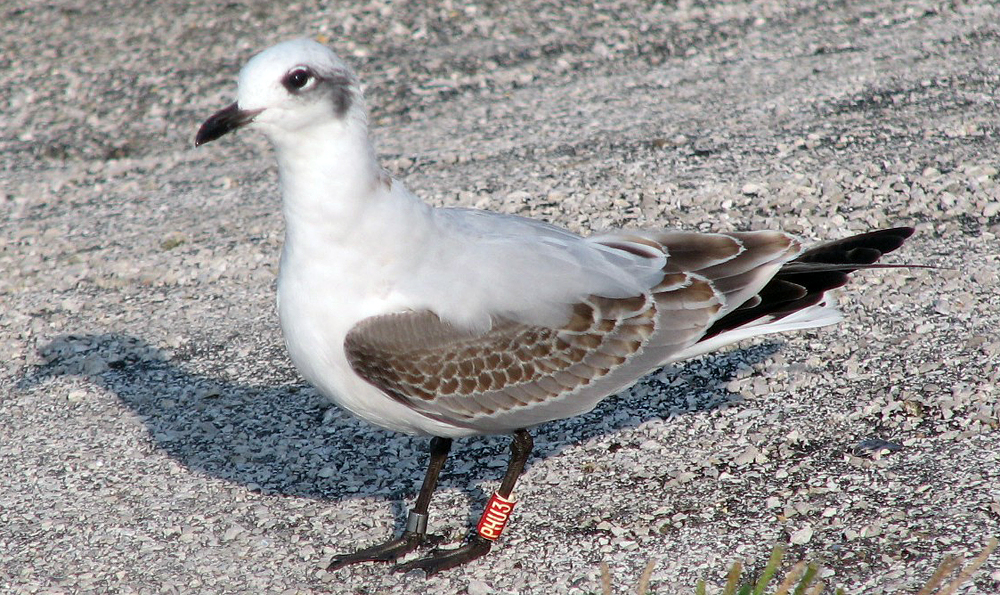 Mediterranean Gull (L. melanocephalus)
Mediterranean Gull (L. melanocephalus)
(last update:
Mediterranean Gull 1cy PHU3 September 23 2007, Le Portel / Boulogne-sur-Mer, NW France. Picture: Jean-Michel Sauvage.
Bird from Poland.
The partial autumn moult (post-juvenile moult into so-called "first winter" plumage) takes place right from the moment the juveniles leave the colony (usually mid July) and is finished by late September. It's a partial moult of the head and body feathers. The head and under-parts become almost completely white, the head with a clear dark mask of variable size behind the eye extending over the nape. The eye-crescents are white. The second generation mantle and scapulars are plain grey. The edges of the rich brown wing-coverts bleach to pale brown and the white fringes are all but worn away. Only a limited number of lower lesser coverts and median coverts are included in the post-juvenile moult. In this individual the upper tertials and innermost greater coverts have been replaced by plain grey second generation feathers. All juvenile feathers show some wear by October, contrasting with the recently moulted second generation feathers. The base of the bill starts to turn paler and the legs remain dark, but on some birds turn slightly paler.
Note that the comments on moult are based on observations of juveniles from and in Western Europe in early autumn. More easterly fledged Mediterranean Gulls may postpone their moult to first winter until later in the autumn and very fresh looking juveniles may be encountered well into October.
